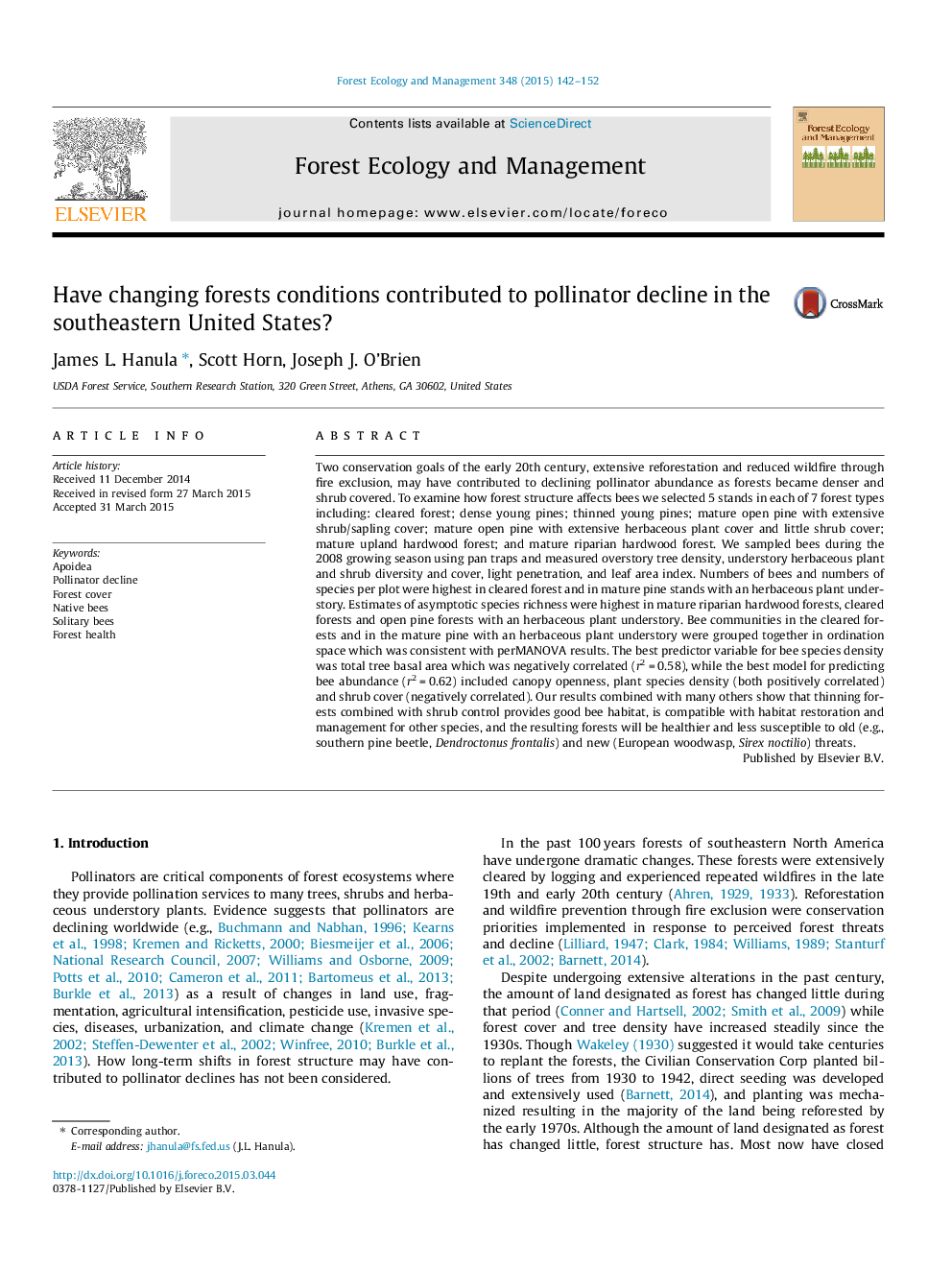| کد مقاله | کد نشریه | سال انتشار | مقاله انگلیسی | نسخه تمام متن |
|---|---|---|---|---|
| 6542797 | 159173 | 2015 | 11 صفحه PDF | دانلود رایگان |
عنوان انگلیسی مقاله ISI
Have changing forests conditions contributed to pollinator decline in the southeastern United States?
ترجمه فارسی عنوان
تغییر شرایط جنگل باعث کاهش گردهافشان در جنوب شرقی ایالات متحده شد؟
دانلود مقاله + سفارش ترجمه
دانلود مقاله ISI انگلیسی
رایگان برای ایرانیان
کلمات کلیدی
موضوعات مرتبط
علوم زیستی و بیوفناوری
علوم کشاورزی و بیولوژیک
بوم شناسی، تکامل، رفتار و سامانه شناسی
چکیده انگلیسی
Two conservation goals of the early 20th century, extensive reforestation and reduced wildfire through fire exclusion, may have contributed to declining pollinator abundance as forests became denser and shrub covered. To examine how forest structure affects bees we selected 5 stands in each of 7 forest types including: cleared forest; dense young pines; thinned young pines; mature open pine with extensive shrub/sapling cover; mature open pine with extensive herbaceous plant cover and little shrub cover; mature upland hardwood forest; and mature riparian hardwood forest. We sampled bees during the 2008 growing season using pan traps and measured overstory tree density, understory herbaceous plant and shrub diversity and cover, light penetration, and leaf area index. Numbers of bees and numbers of species per plot were highest in cleared forest and in mature pine stands with an herbaceous plant understory. Estimates of asymptotic species richness were highest in mature riparian hardwood forests, cleared forests and open pine forests with an herbaceous plant understory. Bee communities in the cleared forests and in the mature pine with an herbaceous plant understory were grouped together in ordination space which was consistent with perMANOVA results. The best predictor variable for bee species density was total tree basal area which was negatively correlated (r2Â =Â 0.58), while the best model for predicting bee abundance (r2Â =Â 0.62) included canopy openness, plant species density (both positively correlated) and shrub cover (negatively correlated). Our results combined with many others show that thinning forests combined with shrub control provides good bee habitat, is compatible with habitat restoration and management for other species, and the resulting forests will be healthier and less susceptible to old (e.g., southern pine beetle, Dendroctonus frontalis) and new (European woodwasp, Sirex noctilio) threats.
ناشر
Database: Elsevier - ScienceDirect (ساینس دایرکت)
Journal: Forest Ecology and Management - Volume 348, 15 July 2015, Pages 142-152
Journal: Forest Ecology and Management - Volume 348, 15 July 2015, Pages 142-152
نویسندگان
James L. Hanula, Scott Horn, Joseph J. O'Brien,
